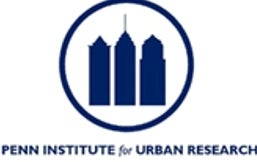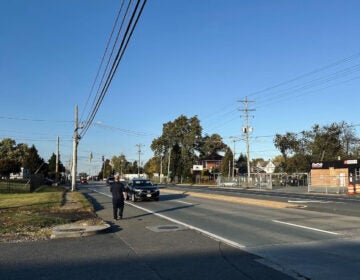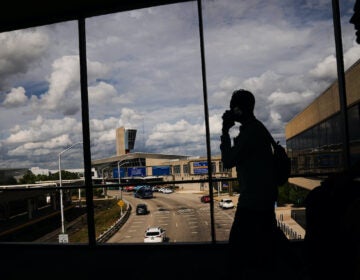The necessity of urban anchors

Oct. 11
By Natalie Pompilio
For PlanPhilly
How appropriate that a conference focused on “urban anchors” and their power to change a community would be held at the University of Pennsylvania’s West Philadelphia campus.
A decade ago, parts of the neighborhood called University City were inhospitable. There was plenty of crime, abandoned houses, trash on the streets. Businesses had closed shop, leaving empty storefronts behind. As it was in most of the city, the public school system was foundering.
“The blight of the neighborhood had become the plight of the university,” said former Penn president Judith Rodin. “We knew we could not have a truly great university in a deteriorating neighborhood.”
So Penn – the neighborhood’s “anchor,” if you will – joined the community in fighting back. That meant restoring and buying properties, hiring more police, finding ways to bring residents together with students and faculty, breaking the wall between “town and gown.”
Now, the streets are brighter, cleaner. University City’s crime rate fell 40 percent between 1996 and 2002 and continues to decline. A bustling business corridor occupies streets that once stood empty. Property values continue to rise and the local elementary school is one of the city’s most respected public learning centers.
“We identified that a university can and should play a lead role in urban revitalization,” Rodin said.
Rodin was one of the featured speakers during the two-day conference, called “Urban Anchors in the 21st century: A Commitment to Place, Growth and Community,” hosted by the Penn Institute for Urban Research and sponsored by a group that included Bank of America, Penn’s Barbara and Edward Netter Center for Community Partnerships, Great Cities Institute, CEOs for Cities, The Annie E. Casey Foundation and The Rockefeller Foundation.
(Of course, Rodin acknowledged, not everyone approves of the university’s drive. Some had decried the “McPennification” of the area. Similar complaints arose earlier this month when Temple University in North Philadelphia announced a new program to encourage employees to buy homes in the area. Temple officials said its community is on board with the project.)
An anchor doesn’t have to be a university. Anchors are hospitals, sports facilities, cultural centers, religious establishments or private businesses. These anchors, as the conference overview noted, serve “as engines of urban renaissance (or even survival.) In many places, they are magnets for economic development. Their direct impact derives from their landholdings, capacity as large employers, revenue generators, goods and services purchases, centers of human capital and economic cluster deliverers. Indirectly, they contribute to urban reinvention and civic pride; attract coveted knowledge-industry workers and suburban spenders.”
Representatives from various Philadelphia anchors shared their perspectives and ideas during the conference. A few areas of note:
Religion
The city’s Catholic population is declining but the Archdiocese of Philadelphia is the largest provider of social services in southeastern Pennsylvania, according to Bishop Joseph P. McFadden. Those services include hospitals, nursing homes, and counseling services.
The church’s school population is also shrinking: North Catholic High School, for example, once had 3,000 students and now has 700. But if the church were to close its schools, the public school system would need an additional $97 million to provide those students an education. Knowing such closures would harm neighborhoods and students, the church is putting an emphasis on technology in the schools, which are open to students of all faiths.
“Our work calls us to love our neighbor,” McFadden said. “We do many things other than proselytize.”
Culture
Cultural institutions like museums can stimulate urban development. Stephen Sheppard, an economics professor at Williams College, presented the cases of two working-class cities of about 14,000 residents — one in Massachusetts, the other in New York — that suffered job loss from the closure of industry. Both opened museums that generated jobs, brought in visitors and tax dollars, and contributed to higher housing values in the neighborhoods around them, he said. While the museums in no way could make up for the number of jobs lost by the closure of industry, they were definitely part of the cities’ revitalization strategy, he said.
Peggy Amsterdam, president of the Greater Philadelphia Cultural Alliance, shared a recent study that showed the nonprofit arts and culture organizations of Southeastern Pennsylvania are a strong economic engine, generating $1.3 billion in expenditures and $158 million in state and local taxes annually. The organizations provide 40,000 jobs. A random survey of 1,000 area residents found that 83 percent of them attended an arts or cultural event in the last year.
In 2004, Philadelphia eliminated its office of arts and culture, Amsterdam said. With a new mayor slated to take office in January, she hopes that office is reopened and the city’s current arts and culture budget of $1.2 million is increased. It’s a good investment, she said: her study showed that every $1 invested by local government returns $5 in tax revenue. Each $1 invested by state government returns $2.50 in state tax revenue.
“Culture pays for itself,” Amsterdam said.
“Meds and Eds”
But perhaps “meds and eds” have the greatest obligations to their neighborhoods. Educational institutions and medical facilities account for more than half the jobs available in major cities like Washington, D.C., Baltimore and Philadelphia.
Boston has MASCO — Medical, Academic, and Scientific Community Organization. The collaboration includes all of Harvard’s medical institutions, colleges, and private businesses. President and CEO Marilyn Swartz-Lloyd said the organization works to bridge the relationship between the organizations and the residents who live in its area.
To reduce traffic in this neighborhood, one of the most congested in Boston, MASCO operates parking facilities, runs shuttle buses that transport 11,000 people a day, and works with other large institutions to acquire state money for commuter rail improvements.
Addressing workforce development, MASCO found a “great mismatch” between the local workforce and the jobs its institutions were offering. Institutions began providing English language classes for adults and went into the high schools, offering internships and math and science mentor-ships.
“You couldn’t just hire, Swartz-Lloyd. “You had to get into the schools.”
Penn got into the schools, and invited the schools to come to it. Rodin said the university had “an obligation and an opportunity” to improve its surroundings. It moved on five fronts at once, she said: Seeking safer, cleaner streets; creating quality, diverse housing; reviving commerce; improving local schools; and working with the community to decide the university’s role.
During the process, Penn has learned to be both leader and follower.
“Sometimes we played the preacher. Sometimes we stepped back into the choir. Often we had to learn how to do each,” she said. “You can’t do this for the neighborhood. You must do this with the neighborhood.”
Natalie Pompilio is a former Inquirer staff writer who resides in Philadelphia.
WHYY is your source for fact-based, in-depth journalism and information. As a nonprofit organization, we rely on financial support from readers like you. Please give today.






